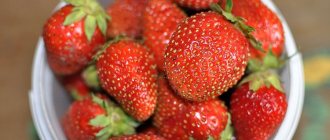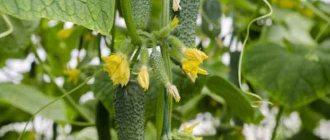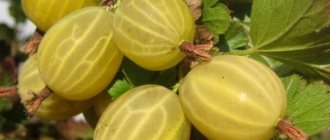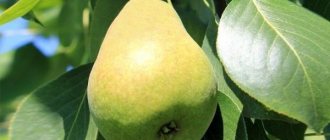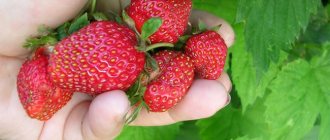Most of all, gardeners value large-fruited varieties, one of which is the Maxim strawberry variety, bred by Dutch breeders, the description of which is presented in the article.
Just like other varieties, Maxim strawberries contain almost the entire periodic table. It contains vitamin C, iron, calcium, zinc, copper, silicon and other compounds. Experienced housewives use it fresh and frozen, process it into preserves, jams, and compotes. Therefore, it is useful to know all the features of growing the Maxim variety.
Description of the variety
For many gardeners, Maxim is one of their favorite varieties for a number of reasons, which are its distinctive advantage. In the first harvest, the berries reach a diameter of up to 9 cm and a weight of up to 100-125 g, subsequent ones are slightly less - 40-60 g.
The bushes are spreading, have fairly large corrugated light green leaves, reaching a height of 40-50 cm, reaching up to 70 cm in diameter. The rhizome is also quite large. For good fruiting, when planting, you need to dig large holes, the distance between them should be about 50 centimeters.
One fruiting strawberry bush can bear up to 30 strong flower stalks reaching 1 centimeter in diameter, each of which contains about 6-8 flowers. There are no problems with the propagation of this variety, since a healthy fruiting bush produces a lot of runners. In one place it can grow up to 8 years.
However, there are those who do not like this variety. The reason lies in the bizarre shape, which is considered completely ugly. In fact, the shape of the Maxim variety of strawberries is very unique - it is somewhat reminiscent of an accordion, and in its upper part there is a peculiar ridge. Also, the berry itself is often compressed on both sides.
After full ripening, the color of the berries becomes rich dark red. The berries of the Maxim variety are colored from the stalk to its very tip. Thus, unripe berries are always very easy to distinguish - their tops will stand out with a whitish tint. The Maxim variety has a rough skin, no gloss or shine.
The Maxim strawberries themselves are very dense and juicy. However, if there is insufficient watering, empty cavities may be found inside, and the taste will not be as juicy and pronounced. Although it is usually described as a dessert pineapple flavor.
Care
In general, caring for “Maxim” provides the same rules as for other varieties of this crop. However, since this is a large-fruited variety, there are also some differences.
Thus, the Gigantella strawberry is characterized by very rapid growth, during which its bushes form many tendrils. To prevent the planting from becoming dense, they should be cut off. If you need layering for propagation, then you can leave a couple of bushes alone.
Watering strawberries
This variety requires regular watering. It is important that it is sufficient and timely. Only in this case can you get high-quality berries.
The plant is usually watered 3-4 times a week. To retain moisture, the soil around the bushes is mulched.
Strawberries especially urgently need watering during fruiting. It is good to do this in the morning before sunrise or in the evening after sunset.
In general, the optimal solution for this variety is drip irrigation. In the absence of such, the area is watered between the rows.
Important! After each watering, it is important to loosen the soil and simultaneous weeding.
Transfer
Strawberries of the Maxim variety, as mentioned above, require replanting in the fourth year of cultivation. It is optimal to carry it out in the middle of the second summer month, trying to injure the roots of the plants as little as possible.
Fertilizer and feeding
In order for this variety of strawberry to develop well and bear fruit, the plants must be fertilized and fed. So, every year it’s a good idea to add a bucket of rotted compost under the bushes. In the spring, it is recommended to treat the area with “Maxim” with a mixture of “Gumi” and “Fitosporin” to disinfect the soil.
It is necessary to feed the plants once a week , but not less often, using an infusion of organic matter. To obtain it, you should add potassium salt, superphosphate, mullein or bird droppings to the weed infusion. It is good to use complex fertilizers for garden strawberries for these purposes.
This procedure is usually combined with watering.
Characteristic
The Maxim strawberry variety has many characteristics, thanks to which many farmers choose it, and for good reason. Here are some of them.
- Suitable for cultivation not only in the southern part of Russia, but also in its central zone.
- In the southern regions of the country, it begins to bear fruit quite early, from the end of May to the beginning of June; in the middle zone, the first harvest can be obtained a little later, around the beginning of July.
- Even in the rainy season, Maxim ripens juicy, dense, sweet and sour and has a light pineapple aroma.
- Strawberries of this variety appear once per season, but the fruiting period is extended and lasts until August.
- The yield from one bush is 1 kg, and with more careful and careful care - 2 or more.
- Maxim strawberries are unique in their use - from eating freshly picked berries to making jams and other products.
- Strawberries Maxim are stored in the refrigerator for a very long time - on average up to 1 week.
- Good for freezing. At the same time, the taste does not change.
- Suitable for transportation, which is valuable for mass cultivation of crops.
Reviews from gardeners about the Maxim variety
Reviews from gardeners
about the variety are mostly positive.
Lovers note the large size of the berries, delicate taste with a fruity aftertaste. However, there are also disadvantages - excessive demands on care and difficulties in cultivation . Such plants are suitable only for experienced gardeners who already have experience in growing large-fruited strawberries.
The variety is not suitable for commercial farms , because Each plant requires individual and careful care.
Thus, Strawberry Maxim is only suitable for truly experienced gardeners . It has many nuances in cultivation, and is quite demanding in terms of humidity, soil chemical parameters and climate. However, with due diligence, the plant will certainly give a rich and tasty harvest.
Cultivation
With proper soil fertilization, Maxim strawberries grow well in the same place. However, farmers with extensive experience advise keeping bushes in one area for no more than 8 years. Over such a long period of time, the plant becomes obsolete, which is why the yield decreases, and it often gets sick. There is also severe soil depletion.
To solve this problem, there are several methods that are best combined. First of all, it is recommended to use new planting material - this way the yield will remain at a high level. For transplantation, it is better to take your own material only if it is absolutely healthy.
The soil must not only be fertilized, but also completely renewed. It is worth digging up the soil periodically, first pulling out the plant, and also removing a layer of soil 10-20 cm deep, and also adding humus mixed with fertilizers. This way the harvest will always be rich, and the bushes will grow very well.
Diseases and pests
The strawberry variety “Gigantella Maxim” is attractive not only to gardeners, but also to all kinds of pests.
To prevent various insects and fungal diseases from appearing on the site, the bushes must be treated on time.
In general, about four sprays per season are enough to get rid of all this evil. To do this, use a mixture of the same drugs “Fitosporin” and “Gumi”.
True, during the budding period they also add 5 drops of Fitoverma. Treatment of plants is carried out in early May, during plant budding, in early August and in September.
Reproduction methods
To obtain a young strawberry plant of this variety, you can use traditional propagation methods.
- seeds;
- rooting the mustache;
- dividing the bush.
The method of propagating Maxim strawberries by seeds is the most labor-intensive and least effective. Sprouted seeds will yield a harvest only after a year.
To successfully propagate Maxim strawberries, use bush division or rooting. Young plants will bloom within the year of planting.
Strawberry Gigantella - description and care of a large-fruited variety
Many gardeners are engaged in growing strawberries with large fruits. But they argue that such berry crops require special care and if the basic requirements are not followed, the bushes will dry out, the fruits will become smaller, and the yield will sharply decrease.
One of these “capricious” strawberry varieties is Gigantella, by the name of which you can already judge the huge size of its berries.
The content of the article:
1. History of the creation of the variety 2. Main characteristics and description of the variety 3. Productivity of the variety 4. Diseases and pests 5. Agricultural technology for growing the variety 6. Advantages and disadvantages 7. Reviews of Gigantella strawberries
Landing
When planting a plant, there are some rules that it is advisable to follow in order to get a good harvest.
To begin with, to create strawberry beds on the site, you need to allocate quite a lot of space. The distance between the holes when planting should be at least 50-60 cm so that the plants can develop normally. The beds are organized in a lighted area, otherwise it will not receive the required amount of sunlight and, accordingly, will not produce a good harvest.
It is best to plant Maxim strawberries at the end of August, mid-September. It is possible in mid-autumn, as well as in spring. The main thing is that the temperature does not drop below 15 degrees. Experienced gardeners advise replanting in cloudy weather. special attention must be paid to the soil, which should be loose with a uniform moisture regime.
Strawberry Maxim grows very poorly in acidic soil, so it is recommended to lime it. When planting bushes, you need to be very careful with the measles system, otherwise it can be damaged and the plant will die. When planting seedlings, carefully straighten the roots and then sprinkle with soil.
For successful rooting of the plant it is recommended:
- water the seedlings frequently;
- loosen the soil regularly;
- remove weeds.
Features of planting and care
Strawberry Gigantella Maxi will feel especially good in a sunny and warm place, with mandatory protection from wind and drafts. Despite its love for warmth, this variety also does not like extreme heat. Berries may get burned. In any case, Gigantella Maxi requires regular watering, especially in hot weather. The best solution would be to install drip irrigation in combination with mulching the beds.
Regular feeding is required. At the beginning of the season, you can use mainly nitrogen fertilizers, but with the appearance of the first flower stalks it is better to switch to phosphorus-potassium fertilizers. However, the best option would be to use organic matter in all its forms, primarily vermicompost.
Due to the enormous size of all parts of the plant, special attention should be paid to the placement of bushes. Since the Gigantella Maxi strawberry requires a lot of space to grow, the distance between the bushes should not be less than 50-60 cm, or better yet 70 cm. You can leave 80-90 cm between the rows. Thickening of the bushes is one of the main reasons for unsatisfactory yields when growing this variety of strawberries.
Strawberry Gigantella Maxi is also demanding on soil. It is best to plant it in the ground after first growing legume green manure on it. It is in this case that she will be able to show her true properties.
Finally, an important procedure is mustache removal. If you need to propagate this variety, transplant the young rosettes directly to the seedling bed, but separate them from the mother bushes as quickly as possible, otherwise there will not be a good harvest.
Plant care
It cannot be said that Maxim strawberries require any special care after planting, but to obtain a good harvest, some nuances should be observed. As practice shows, Maxim berries are susceptible to sunburn, so try to water the plant in the morning or evening hours, when solar activity subsides.
It is necessary to loosen the soil so that rooting goes smoothly. Do not also forget to weed out weeds, which can slow down the growth of the plant. Feed the bushes periodically. Organic substances are best used in the spring, and lime substances in the fall.
Maxim's strawberries are very fond of slugs and ticks, snails, and mole crickets. Carry out preventive work against pests and diseases. Effective methods include planting onions, garlic, parsley, and celery between rows. The plant is weakly resistant to various fungal diseases, which also requires additional care.
If the plant becomes diseased, remove the rotten parts and treat the bed with phytosporin or other fungicides. When preparing strawberries for winter, you should not remove yellowed leaves. In severe frost, they will protect the rhizomes from freezing.
Care instructions
Gigantella care is standard. Even summer residents who visit their plots of land only once a week, on weekends, can cope with growing this plant.
Loosening
Weed the garden bed only in spring and autumn, preparing the plant for the winter cold. Do not disturb the bushes during flowering and fruiting, as this may weaken them. Remove all weeds in advance, and then treat the soil with a special compound to prevent their further growth.
Watering
Moisten the substrate as its top layer dries. The soil should not turn to dust or crack. During the hot season, which usually lasts from July to August, water your strawberries regularly, at least once every two days. In normal times, it is enough to moisten the soil once every two weeks.
It is advisable to water in such a way that moisture does not get into the core, otherwise rotting of the root system and stem may develop.
Pest Control
The variety is susceptible to fungal infections, so it is necessary to regularly check its stems for powdery mildew and rot. If there are suspicions about the development of one of the diseases, it is necessary to treat the plant with a fungicide. At the same time, you can spray the bushes with such preparations only after the strawberries have bloomed and produced a harvest.
If fungicides are used earlier, people and bees collecting pollen may be poisoned. In order to prevent the development of diseases, you can periodically add ash to the soil or sprinkle a thin layer of leaves.
Mulching
Mulching the soil prevents the development of weeds and accumulates moisture, releasing it during hot periods. It is necessary to sprinkle sawdust or chopped straw on the soil in a thin layer. This procedure must be carried out as the previous mulch material disappears.
Fertilizer application
Strawberries love fluoride and potassium. Fertilizers with such components need to be applied 2 times during the entire growth period until fruiting, preferably in May and June. Immediately after planting the seedlings or simply at the beginning of spring, if the bushes survived the winter, it is recommended to sprinkle the rhizome with ash.
More information about spring feeding of strawberries can be found here.
In the fall, it is enough to dig up the bed and add compost or pre-prepared leaf humus to the soil. Manure may be used.
Trimming tendrils and leaves
The mustache must be trimmed, as it draws out nutrients and interferes with the development of the fruit. You can leave them only on those bushes from which the tendrils will then be taken for rooting.
Rules for trimming tendrils, stems and leaves:
- Carry out only in dry weather to prevent rotting.
- Take one tendril from one bush, cut off the others.
- Cut off all excess shoots with scissors rather than tearing them off with your hands.
Feeding during the growing season
When the plant multiplies, that is, the tendrils take root, you can use any fertilizer for fruit crops to add to the aqueous solution. Ash is recommended after planting.
Preparing bushes for wintering
After the strawberries have bloomed and produced a harvest, remove any dried or yellowed leaves. Loosen the soil and remove weeds. It is advisable to cover the bushes with straw to protect them from frost. If snow falls, they will already be protected, but during periods of little snow, the death of uncovered plants is possible.
Advantages
The Maxim variety has many advantages - from its unpretentiousness to excellent reproduction and rich harvest. At the same time, many farmers note many more positive features. First of all, this is the period of its fruiting. Strawberry Maxim does not depend on how early summer comes, which cannot be said about other varieties. This trait is very useful for those gardeners who do not live in the south.
The ripening period is about a month, after which strawberries can remain on the bush for a long time without undergoing decay processes, and therefore they can be safely eaten throughout almost the entire season. Also, after picking, the Maxim strawberry variety can be stored for a very long time - it does not wrinkle unless it is overripe. However, it is worth considering that it is best to store it in a dry place - this way the berries will not rot or become moldy. This makes the crop suitable for sale and transportation.
Even with little effort, the bushes will always bear fruit well - from one it will be possible to collect over a dozen fairly large berries. In addition, their taste is also distinctive - there is no bitterness, but also no excessive sweetness. A stable harvest is also a very important factor. Harvests do not depend on external factors, so plenty of watering and a little fertilizer are enough.
Features of growing strawberries Maxim
Like any other decorative berry, Maxim strawberries require careful care , otherwise they will not produce a rich harvest. With proper care, the yield is quite high - you can collect up to 135 centners of berries from one hectare. Strawberries are very demanding to care for and require a number of agrotechnical works and a suitable microclimate for successful growth.
Description and characteristics of the variety
The berries are very large, dark red in color . At the same time, even a ripe crop remains unevenly colored, perhaps interspersed with green or white. The first berries from the bushes can weigh up to 100 g, and subsequent ones - about 60-70.
Bushes
The bushes are very large, powerful, with well-developed stems and cuttings. The foliage is not too abundant and almost does not protect the berries from the sun and rain, but in greenhouses this disadvantage is canceled out. The bushes can be grown without replanting for up to 6 years , and their maximum height is 50 cm. They can reach 70 cm in diameter.
Cultivation
The ideal place for the variety is open, level, sunny and windless. Strawberries produce the best harvest in greenhouses. Considering the dimensions of the bushes and seedlings, they need to be located at some distance from each other. Plants are very demanding on cultivation conditions ; they require a certain level of humidity and temperature:
- If you do not water the beds enough, voids will appear in the berries, which will seriously reduce the taste of the crop.
- Too wet soil, on the contrary, will make the berries watery. They will not ripen on time, will not be sweet and are much crushed compared to the normal harvest. The risk of rot and mold, which will destroy sensitive plants, greatly increases.
To avoid the appearance of various bacterial and viral diseases, it is recommended to use special fungicides and insecticides , as well as treat the garden against rodents and other pests.
Flaws
However, there are also a number of disadvantages, due to which you will have to put in much more effort to grow if you have to face them. Firstly, this variety has low frost resistance, so if the winter has little snow, the bushes may freeze. To do this, the beds can be covered first, then the bushes will not freeze.
The main disadvantage is poor resistance to all kinds of pests and diseases. Therefore, you should always have the necessary tools, such as fungicides and insecticides, in order to use them on time. It is also necessary to look after the condition of the external organs of the plant - stems and leaves.
Try planting the Maxim variety on your plot. Provide him with proper care and attention. And believe me, the plant will certainly thank you with a high yield of large, bright, aromatic and tasty strawberries of the Maxim variety.
Characteristics table
There is some confusion with the name of the variety. Some reference books claim that it should be read as Gigantella Maxi, others settled on the short name Maxim. But both give the same description of culture. The main characteristics of the variety are presented in the table.
| Parameter | Characteristic |
| Ripening period | Mid-late |
| How many times does it bear fruit per season? | Once, non-remontant variety |
| Yield per bush | High: 1–3 kg per bush |
| Berry size | Large, up to 50–60 g, some specimens reach 100 g |
| Form | Ribbed, slightly flattened, sometimes rounded-conical, the berry is wider than it is long |
| Color | Rich red |
| Taste qualities | Excellent |
| Aroma | Bright pineapple |
| Pulp | Soft, juicy |
| Purpose of the variety | Universal |
| Drought resistance | Low |
| Frost resistance, winter hardiness | Up to -20 °C, only under snow cover |
| Disease resistance | Weak, affected by all strawberry diseases |
| Transportability of berries | 4.8 out of 5 points |
| Life cycle | 8 years |
| Tasting assessment | 4.4 out of 5 points |
Reproduction
The propagation process of Maxim does not differ from the vegetative method, which is used when caring for similar crops. It is much more convenient to take for planting not seeds, but tendrils, which form in abundance on each bush. Reproduction can be either spontaneous, that is, occurring without the participation of the gardener, or forced.
It is better to do the planting of the mustache yourself, otherwise the previously orderly beds will turn into chaotic, unorganized flower beds, and the strawberries will begin to grow poorly or even die.
History of the variety's creation
It is believed that the Gigantella variety is the fruit of selection by specialists from the Netherlands, who gave the name to this strawberry Gigantella Maxim.
Later, after the appearance of the variety on the Russian market, this name was transformed into Gigantella maxi, Gigantella Maxim, and some sellers simply call it Maxim and claim that
Gigantella and Maxim are completely different varieties, but in fact this is not the case.
Despite the fact that this variety appeared on the Russian market quite a long time ago, it was never included in the State Register.
Therefore, the main characteristics, description of the Gigantella strawberry variety and rules for caring for this berry crop are taken from the description of Dutch experts and reviews of gardeners who have been growing this variety on their plots for a long time.
Photo of strawberry Gigantella
In addition, you need to take into account that varieties with large fruits require special growing conditions; they grow better, and the fruits actually appear large in a warm southern climate on loose soils with a sufficient amount of nutrients. In regions with colder climates, it is recommended to plant Gigantella strawberries in greenhouse conditions and create all the conditions for abundant fruiting: water and fertilize on time, loosen and mulch the soil, remove weeds and tendrils that deplete the mother bushes, and as a result the fruits become smaller.
Description and characteristics of the variety
Large-fruited variety of Dutch selection.
Sweet taste reminiscent of strawberries.
Powerful bush.
Berry weight is up to 100 grams or more.
Long fruiting from mid-June.
Stable yield from year to year.
The second name of the Maxim variety is Gigantella Maxim.
This species is well known not only among Russian farmers, but also abroad. The Maxim strawberry, bred in Holland, has a number of advantages related to its yield and bush care.
Bushes
The variety is characterized by its exterior, namely powerful bushes, a developed root system with large peduncles.
The plant produces a significant number of tendrils, which can also be described as long, strong and thick. The diameter of an adult bush can reach 60–65 cm , and this is with an average height of 45–50 cm .
When planting seedlings, you should remember not only the impressive growth area of the bush, but also the no lesser size of the future rhizome of the plant.
Advantages of the variety
The berries are one to one, and the pulp is dense, juicy and tasty.
This berry crop is known for a number of valuable advantages that make the variety popular and profitable:
- stable yield, including constant size and shape of berries throughout the entire cultivation period;
- high productivity;
- presentable appearance;
- many processing options, including freezing;
- good transportability;
- high tasting qualities;
- long fruiting period;
- mid-late term.
Flaws
Disadvantages include:
- insufficient frost resistance in winters with little snow;
- average resistance to some types of pests and diseases.
However, proper care eliminates all the disadvantages of the variety.


